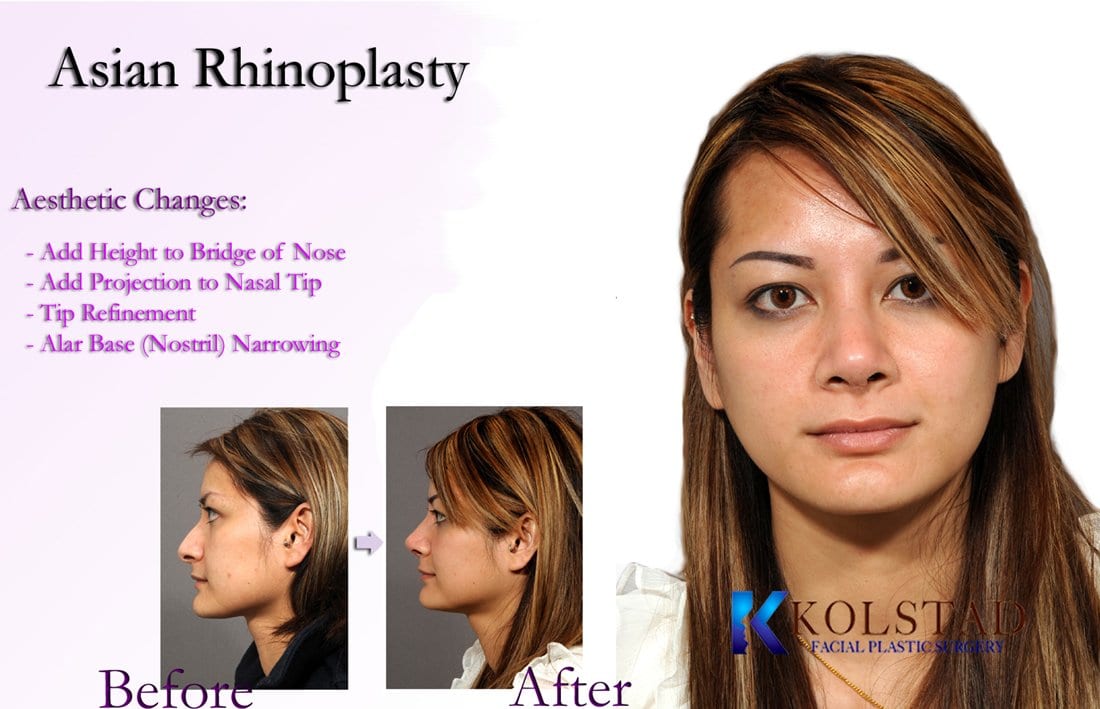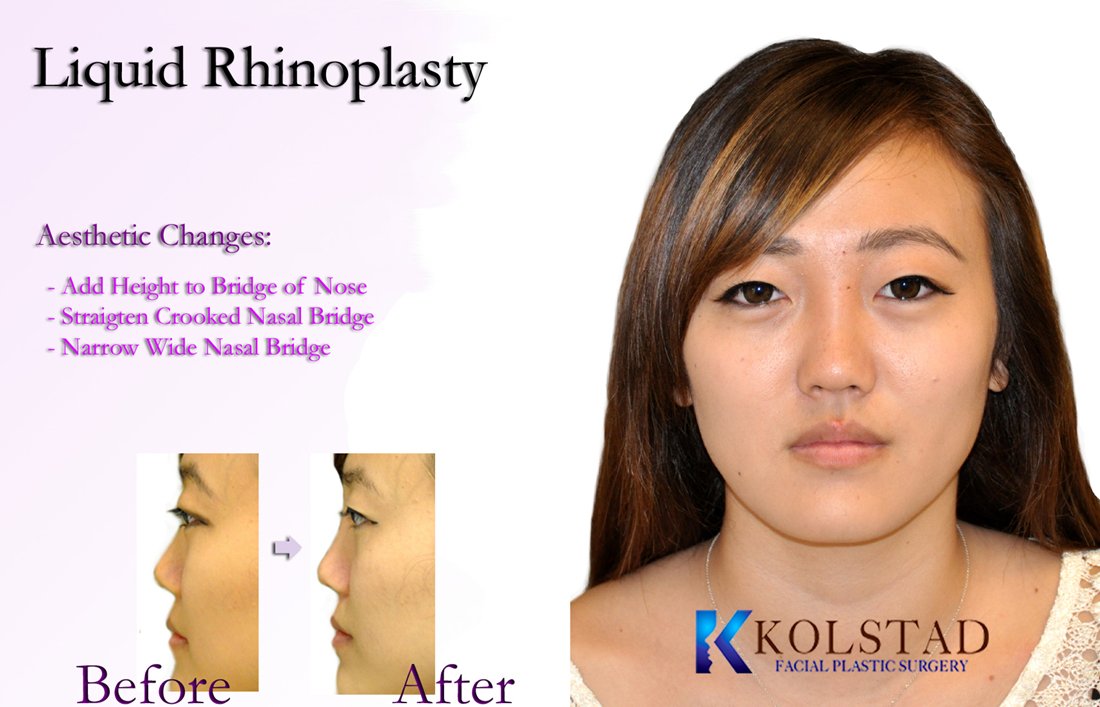Many of our Asian patients are not looking to make a large dorsal hump smaller, but instead are seeking to augment a diminutive nasal bridge. They are seeking refinement of the nasal tip, without it looking too narrow. Above all, they seek to retain the features unique to their ethnicity.
The goal of Asian rhinoplasty is simple: to enhance one’s natural features and refine the others in a way that balances the nose in harmony with the rest of the face. Achieving this goal is best performed by the hands of a specialist.
Why do you need a rhinoplasty specialist?
Rhinoplasty is perhaps the most difficult operation to perform in facial plastic surgery. One to two millimeters can be all that separates perfection from unacceptable. What may appear to be an easy change, for example reducing a prominent dorsal hump, will alter the appearance of the entire nose and the way the nose interacts with the face.
In short, rhinoplasty surgery is complicated. Without question, rhinoplasty requires a surgeon who specializes in plastic surgery of the face. Dr. Kolstad will not take any shortcuts during your surgery, spending an average 3-3.5 hours making sure that your nose will look and function at its best.
Dr. Kolstad learned his technique from one of the best rhinoplasty surgeons in the world. He spent an entire year in New York working exclusively with one of the world’s premier Facial Plastic Surgeons.
“You do not learn plastic surgery from a book or by watching a video. You learn to become the best by working with the best.”
He will illustrate his surgical goals and direction using state-of-the-art computer imaging software. During the image enhancement session, you will have the opportunity to express your likes and dislikes about the shape of your nose. Your aesthetic goals will be incorporated into the image enhancement. You will have the final say in determining if this is the right nose for you.
How different will you look? Remember, if it doesn’t look natural, it doesn’t look good. Dr. Kolstad’s goal is for you to enjoy the new shape and contours of your nose in the mirror and in photographs. Your friends and colleagues should compliment you on the shape of your nose without ever recognizing that it was done.
Look around, there are no pinched nasal tips on this site!
The open approach allows for a direct view of the nasal structures leading to a more predictable result. Dr. Kolstad will use cartilage from your septum, (possibly ear or rib in revision cases) to enhance the definition of your nose and to provide support.
You can choose to reduce or increase the size of your nose, change the tip or the bridge, narrow the span of the nostrils or change the angle between your nose and your upper lip.
Dr. Kolstad will evaluate the structure of your nose in relation to the shape of your face, the thickness of your skin, your height and your age. He will work with you to try to make your nose complement your other facial features.
NOT READY FOR SURGERY? CONSIDER LIQUID RHINOPLASTY
Nonsurgical rhinoplasty is a procedure performed in the office to increase the size of a nasal bridge or soften a nasal hump. This procedure is most often sought by Asian and African American patients looking to add volume and definition to the part of the nose that rests between the eyes.
Adding volume to a diminutive nasal bridge can have a dramatic impact on the entire face. Injectable rhinoplasty is most noticeable on profile view. Nonsurgical rhinoplasty can soften a nasal hump or add volume to a small nasal bridge.
WHAT CAN BE CORRECTED WITH LIQUID RHINOPLASTY:
- A nasal bridge with a hump can be straightened
- A nasal bridge that is scooped
- A bridge that is too small at the root of the nose (between the eyes)
WHAT CANNOT BE CORRECTED WITH LIQUID RHINOPLASTY:
- A wide nasal tip
- Nostrils that are too large
- Typically injectable fillers such as Juvederm, Restylane or Radiesse are expertly placed into the nasal bridge. The results can last up to a year depending on the amount and product used. Dr. Kolstad can frequently illustrate potential changes using computer-enhancement software before you have to decide if it is the right look for you.
Frequently Asked Questions
The rhinoplasty cast will stay on for one week. After removal of the splint, your nose will be a little swollen and “puffy”. However, even when swollen, your nose will look better than it did before surgery.
It takes two to three weeks for the majority of swelling to be reabsorbed from your nose. As the swelling is removed, your nose will become more contoured and the definition will enhance.
It is very important to choose a plastic surgeon that specializes in operating on the face. Dr. Kolstad is an expert in nasal cosmetic surgery and is known as the face specialist, because put simply, that is all he does.
PREPARING FOR THE PROCEDURE: RHINOPLASTY
HOW TO CLEAN INCISIONS AFTER RHINOPLASTY
HOW TO REDUCE SWELLING AFTER RHINOPLASTY
HOW TO TAPE YOUR NOSE AFTER RHINOPLASTY
Contact Us
To schedule an appointment call us at (858) 859-2563 or get in touch with the form below.
[gravityform id=”2″ name=”Contact” title=”false” description=”false”]






